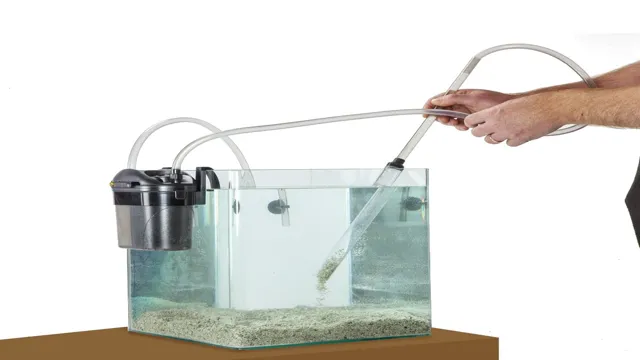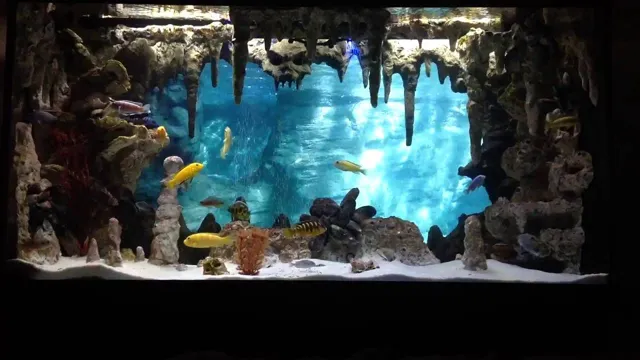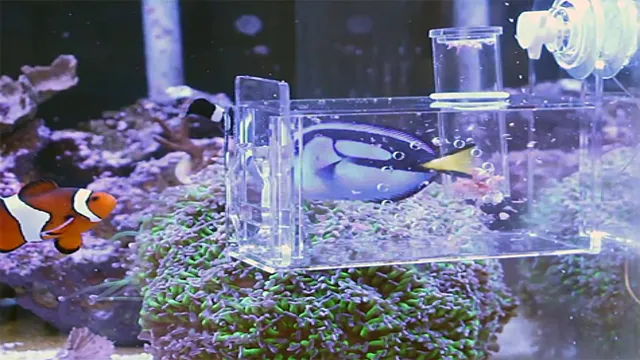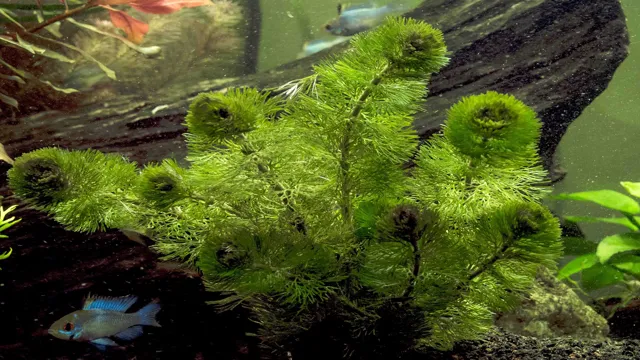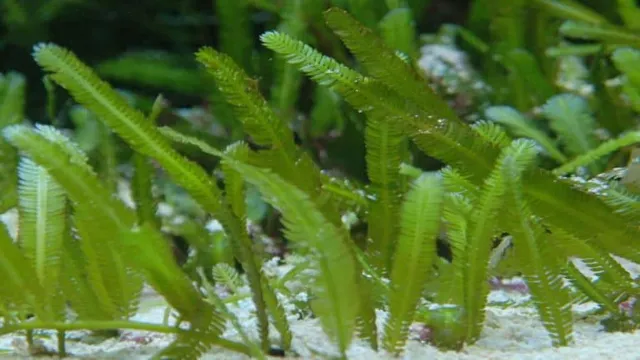How to Fix a Cracked Aquarium Side – Quick and Easy Solutions
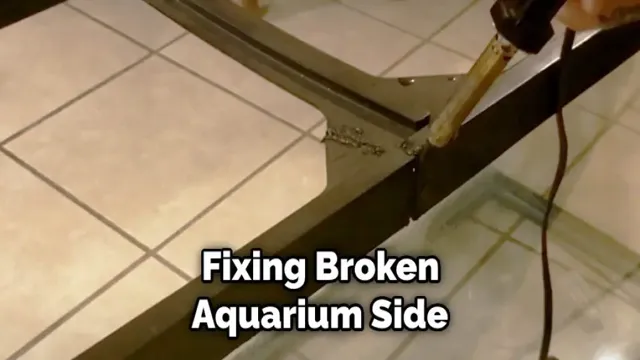
If you’re an aquarium owner, dealing with a cracked aquarium side can be a nerve-wracking experience. Not only can it jeopardize the safety of your pets and the overall wellbeing of your aquatic ecosystem, but it can also be a costly and time-consuming ordeal. However, don’t panic just yet because fixing a cracked aquarium side is not as difficult as it may seem.
In fact, with a little bit of patience and the right set of tools, you can easily fix your aquarium and have it up and running in no time. In this step-by-step guide, we will explore the best practices to fix a cracked aquarium side and ensure that your aquarium remains a safe and enjoyable place for your aquatic pets. So, let’s dive in and get started!
Assess the Damage
If you’ve noticed a crack in the side of your aquarium, the first step is to assess the damage. Begin by examining the crack to determine its length and depth. If the crack is short and shallow, it may be possible to repair it with silicone sealant.
However, if the crack is longer and deeper, you may need to replace the entire side of the aquarium. In either case, it’s important to act quickly to prevent any further damage. Make sure to remove any fish or plants from the tank and drain the water before attempting any repairs.
And always remember to prioritize safety – cracked glass can be sharp and dangerous. By taking the time to properly assess the damage and determine your course of action, you can ensure a successful and safe repair of your aquarium.
Inspect the Crack
As you inspect the crack on your wall, it’s important to assess the damage before deciding on a course of action. Is it a hairline crack or a more severe one? Is it just on the surface or does it extend deeper? These are crucial questions to ask yourself before attempting any repairs. If the crack is minor, you may be able to fill it with spackling paste and repaint the affected area.
However, if it’s a larger crack or if it extends deeper, you may need to consult a professional before attempting any repairs. A structural engineer would be able to determine the underlying cause of the crack and recommend the appropriate course of action. Don’t underestimate the importance of properly assessing the damage, as it could save you time, money, and potential safety hazards in the long run.
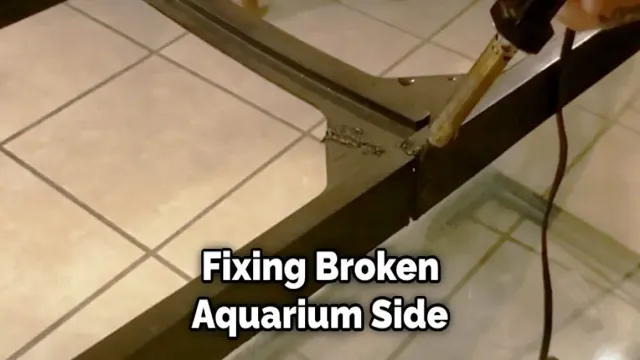
Check for Leaks
“Assess the Damage” When it comes to a plumbing problem, the first thing you need to do is assess the damage. Before you can fix a leak, you need to know how bad it is and where it’s coming from. Start by checking for any visible signs of damage, like wet spots or water stains on the walls or ceiling.
Look for the source of the leak, tracing it back to the origin point. This could be as simple as tightening a loose fitting or as complicated as replacing a broken pipe. However, if you’re unsure of how to fix the problem, it’s always best to call in a professional plumber.
They can quickly assess the damage and provide you with a solution that’s both effective and long-lasting. Ignoring or postponing this can lead to more significant damage, costlier repairs, and even mold growth, which can affect your health and wellbeing. So, the next time you notice a plumbing problem, make sure you assess the damage and take the necessary steps to fix it promptly to prevent any further damage.
Gather the Materials You’ll Need
If you have a cracked aquarium side, it’s essential to fix it immediately to prevent further damage to your fish and water damage to your home. Before starting, gather the materials you’ll need to fix the problem. You’ll need silicone aquarium sealant, a razor blade or putty knife, aquarium-safe adhesive tape, and a small syringe or caulk gun.
Make sure that the sealant you use is specifically designed for aquariums to avoid any harm to your fish. Additionally, use a razor blade or putty knife to remove any excess silicone and prepare the surface for application. Once you have all the required materials ready, you can begin fixing the cracked aquarium side.
By following these steps, you can repair your aquarium and keep your fish safely contained without any further damage or danger.
Silicone Sealant
When it comes to using silicone sealant, it’s important to gather all the materials you’ll need before you start the project. First and foremost, you’ll need the silicone sealant itself, which can be found at most hardware stores. You’ll also need a caulking gun to apply the sealant, as well as a pair of scissors or a utility knife to cut the tip of the sealant tube.
A smooth, clean surface is crucial for ensuring a strong seal, so be sure to have a clean cloth or rag on hand to wipe down the area where you’ll be applying the sealant. Depending on the size of the project, you may also need to use a putty knife or other tool to help smooth out the sealant once it’s been applied. Taking the time to gather all of these materials ahead of time will make the process go much more smoothly, and ensure a job well done.
Rubbing Alcohol
Rubbing alcohol is a common household item that can be used for cleaning or disinfecting purposes. To get started, gather the materials you’ll need. First, make sure you have rubbing alcohol.
You can find this at most stores or pharmacies. It’s usually sold in 70% or 90% concentration, depending on what you need it for. Next, grab some cotton balls or a soft cloth.
These will be used for applying the rubbing alcohol. You’ll also need gloves to protect your hands from the alcohol and any surfaces you’ll be touching, such as doorknobs or countertops. Finally, grab some paper towels to wipe down the area once you’ve finished using the rubbing alcohol.
By having these materials on hand, you’ll be ready to use rubbing alcohol for all your cleaning and disinfecting needs. (See Also: How to Cycle Aquarium Water: A Comprehensive Guide for Beginners)
Plastic Wrap
Plastic wrap is a handy household item that can keep your food fresh and protected from the elements. To get started, gather all the materials you’ll need for the task at hand. First, start with a high-quality plastic wrap.
Look for one that has an airtight seal and is microwave-safe. Make sure it’s strong enough to handle whatever you’re wrapping, yet not too thick that it won’t cling properly. Next, you’ll need a pair of scissors to cut the wrap to the desired length.
It’s always best to use a sharp pair of scissors to ensure accurate cuts and reduce the likelihood of tearing. Lastly, make sure you have a clean, flat surface to work on. This will keep your wrap from sticking to itself or becoming unusable due to contamination.
With these materials on hand, you’re now ready to start wrapping!
Clean the Area
When fixing a cracked aquarium side, one of the first steps you should take is cleaning the area around the crack. This is important to ensure that no debris or dirt remains on the crack’s edges, as this can interfere with the sealant’s bonding process. Start by wiping the area clean with a damp cloth or sponge to remove any visible dirt and dust.
Next, use a scraper or razor blade to gently remove any remaining residue or old sealant around the crack. Be careful not to go too deep or rough, as this can further damage the aquarium glass. Once the area is free from all debris, use a little bit of rubbing alcohol on a clean cloth to wipe the area thoroughly.
This final step will ensure that the surface is completely clean and ready for the sealant to adhere properly. By taking the time to clean the area, you’ll be laying a solid foundation for a successful repair job and a safe living environment for your aquatic pets.
Remove Any Loose Pieces
Before beginning to clean the area, it’s important to remove any loose pieces. This step is often overlooked, but it’s actually essential in ensuring that the area is as clean as possible. Loose pieces can include anything from dirt and debris to small rocks and twigs.
These items can get in the way of your cleaning efforts and make it difficult to achieve the results you’re aiming for. To remove any loose pieces, start by carefully inspecting the area and picking up anything that doesn’t belong there. This may involve using a broom or other cleaning tool to sweep the area and ensure that everything is picked up.
Once you’ve removed any loose pieces, you’ll be ready to move on to the next step of cleaning the area. Remember, taking the time to remove any loose pieces is the first step in ensuring that your cleaning efforts are successful and effective.
Clean the Crack with Rubbing Alcohol
When it comes to fixing cracks in a wall or any other surface, it’s crucial to prepare the area properly. And that starts with cleaning the crack with rubbing alcohol. Why rubbing alcohol, you may ask? Well, rubbing alcohol is incredibly effective for removing any dirt, grime, or debris from the crack.
It’s also a great disinfectant, which can help prevent any bacteria or germs from forming in the area. The best way to clean the crack is to use a cloth or sponge with rubbing alcohol and gently wipe the area. Make sure to focus on the inside of the crack, as that’s where the cleaning is most needed.
Once you’ve wiped the crack clean, let it dry completely before moving onto the next step of your repair project. This step may seem minor, but it’s crucial in ensuring a successful repair. So don’t skip it!
Apply the Silicone Sealant
So you’ve determined that the crack in your aquarium is on a side panel, and you’re ready to fix it yourself. Before you start applying the silicone sealant, make sure the area around the crack is clean and dry. You can use a clean cloth and rubbing alcohol or vinegar to wipe it down.
Once the area is dry, cut the tip of your silicone sealant tube at an angle to ensure a smooth application. Make sure to apply enough silicone to completely cover the crack, and smooth it out with a caulking tool or your finger. The sealant will need to dry completely, which can take up to 24 hours.
Before you add water back into the aquarium, make sure to check that the sealant has cured completely, and test it by filling the tank with water and allowing it to sit for a few hours. If there are any leaks or issues, reapply the silicone sealant as necessary. With some patience and care, applying silicone sealant can be an effective way to fix a cracked aquarium side and get your fish swimming happily once again.
Apply a Thin Layer of Sealant
Applying a thin layer of sealant is an essential step in sealing your home against air and water leaks. When it comes to applying sealant, silicone is often the preferred choice. Silicone is highly durable and resistant to extreme temperatures, making it perfect for sealing around windows, doors, and other areas where air and water could seep in. (See Also: How to Make a Biological Filter for Aquarium: A Step-by-Step Guide)
To start the process, clean the area thoroughly and ensure it’s dry. Apply a small bead of silicone sealant to the area that needs sealing, using a caulking gun to ensure an even application. Then, use a putty knife or your finger to smooth out the sealant and create a thin layer.
Remember, you only need a thin layer of silicone. Applying too much can cause it to crack or peel over time. Once you’ve applied the sealant, let it dry according to the manufacturer’s instructions before testing the area for leaks.
By applying a thin layer of silicone sealant, you can keep your home comfortable and energy-efficient while protecting it from water damage.
Cover the Crack with Plastic Wrap
When it comes to fixing cracks in your walls, one easy solution that won’t break the bank is using silicone sealant. But before you apply the sealant, it’s important to cover the crack with plastic wrap first. This step will prevent the sealant from sticking to the surrounding wall and creating a mess.
Once the crack is covered, cut the tip of the silicone sealant tube and apply a steady, controlled bead of sealant along the crack. Be sure to smooth out the sealant with a caulking tool or your finger. Allow the sealant to dry completely before removing the plastic wrap.
By using silicone sealant and covering the crack with plastic wrap, you’ll have a simple and effective way to fix any wall cracks without spending a lot of money on professional repairs. So why not give it a try?
Leave the Sealant to Cure
When it comes to applying a silicone sealant, the process can seem straightforward, but there are some important details to consider. Before applying the sealant, ensure that the surface is clean and dry as any moisture or dirt can compromise its effectiveness. Once you have thoroughly cleaned and dried the surface, apply the silicone sealant in a steady and smooth manner.
Be sure to leave the sealant to cure fully before using or exposing it to water or moisture. The curing time can vary depending on the surface and the sealant used, so it’s essential to read the manufacturer’s instructions carefully. Rushing the cure time may result in a compromised sealant that may fail over time, so patience is the key.
Furthermore, after applying the sealant, make sure to clean up any excess or residue, as it can be challenging to remove once cured. By following these simple steps, you can ensure a long-lasting and effective sealant that will protect your surfaces from moisture and leaks.
Test for Leaks
If you’re dealing with a cracked aquarium side, don’t panic! It’s a common issue, and thankfully, it’s a problem that can be fixed. The first thing you’ll want to do is test for leaks. You can do this by filling up the tank with water and watching for any water escaping from the crack.
If there is water leaking out, you’ll need to drain the tank and move on to the next step. To fix the cracked aquarium side, you’ll need some aquarium silicone and a razor blade. Start by removing any old silicone from the area around the crack.
Then, apply a generous amount of silicone to the crack and smooth it out with a finger or a tool. Be sure to cover the entire crack with the silicone. Allow the silicone to dry completely according to the manufacturer’s instructions before refilling the tank with water.
It’s important to note that fixing a cracked aquarium side is only a temporary solution. The silicone may not hold up forever, and ultimately, you may need to replace the tank. However, this fix should last you for a year or more, which gives you plenty of time to save up for a replacement tank.
Overall, fixing a cracked aquarium side is a fairly simple DIY project that most aquarium owners can tackle themselves. Just be sure to follow the instructions carefully and take your time to ensure that your aquarium is safe for your aquatic pets.
Fill the Aquarium with Water
Now that you have set up your aquarium, it’s time to fill it with water. But before you do that, you should always perform a leak test. A leak test is an essential step that can save you from a lot of trouble later on.
To perform this, you want to fill the aquarium with water and keep an eye out for any water seeping through the tank or stand. Ensure that the water level is higher than the potential leak, and periodically check if there are any changes in the waterline. Remember, it’s better to take extra precautions than to regret it later.
This simple test can help identify any leaks and prevent a bigger issue from occurring. So, fill the aquarium up and start checking for leaks to ensure your fish and plants have a safe and happy home.
Check for Leaks
Checking for leaks is an essential aspect of home maintenance. Leaks can lead to a vast array of problems if left unchecked, ranging from mold growth to water damage and even flooding. To test for leaks, start by checking your water meter and recording the reading. (See Also: How to Keep Algae from Growing in Aquarium: Top 10 Tips That Work)
Next, turn off all faucets, appliances, and other water sources in your home and wait for an hour. Check the water meter again, and if the reading has increased, you likely have a leak somewhere in your home. You can use food coloring to test for leaks in toilets, placing a few drops in the tank, waiting 10 minutes, and checking the bowl for any discoloration.
It’s important to address any leaks as soon as you become aware of them to prevent potential damage and costly repairs.
Conclusion
In conclusion, repairing a cracked aquarium side is no fish tale. It requires patience, skill, and a steady hand. But don’t let the cracked glass get you down, with a little elbow grease and some DIY magic, your aquarium can be as good as new in no time.
Just remember to take your time, use the proper materials, and don’t be afraid to ask for help. So, the next time your aquarium is feeling a little off, don’t be shellfish, go ahead and give it the repair it deserves. Your aquatic friends will thank you!”
Prevent Cracks in the Future
If you want to prevent cracks in your plumbing system in the future, you should definitely test for leaks. Even the smallest leaks can lead to bigger problems over time, so it’s important to detect them early on. One way to do this is by conducting a pressure test.
This involves filling your pipes with water and increasing the pressure to see if any water escapes. Alternatively, you could hire a professional plumber to use specialized equipment like thermal imaging cameras to detect leaks. Whatever method you choose, regularly testing for leaks can save you a lot of money and hassle in the long run.
Plus, it’s a proactive way to ensure that your plumbing system is working effectively and efficiently. So, don’t wait until you have a major problem on your hands – test for leaks today and prevent cracks in the future!
FAQs
What causes aquarium sides to crack?
There are several reasons why aquarium sides may crack, including improper installation, uneven weight distribution, temperature changes, and physical damage.
How can I tell if my aquarium side is cracked?
Visually inspect the aquarium for any visible cracks or damage. You can also run your hand along the glass surface to feel for any imperfections.
Is it possible to repair a cracked aquarium side?
It is possible to repair a small crack, but it’s recommended to replace the entire panel to ensure the structural integrity of the aquarium.
Can I still use my aquarium if one side is cracked?
It’s not recommended to use an aquarium with a cracked side, as it may break and cause water damage or injury.
How do I prevent my aquarium side from cracking?
Proper installation, regular maintenance, and avoiding extreme temperature changes or physical trauma can all help prevent aquarium sides from cracking.
How long does it take to replace a cracked aquarium side?
The time it takes to replace an aquarium side will depend on the size of the aquarium and the availability of replacement panels.
Can I replace the aquarium side myself, or do I need a professional?
It’s recommended to hire a professional to replace the aquarium side, as it requires specialized tools and expertise to ensure a safe and proper installation.

